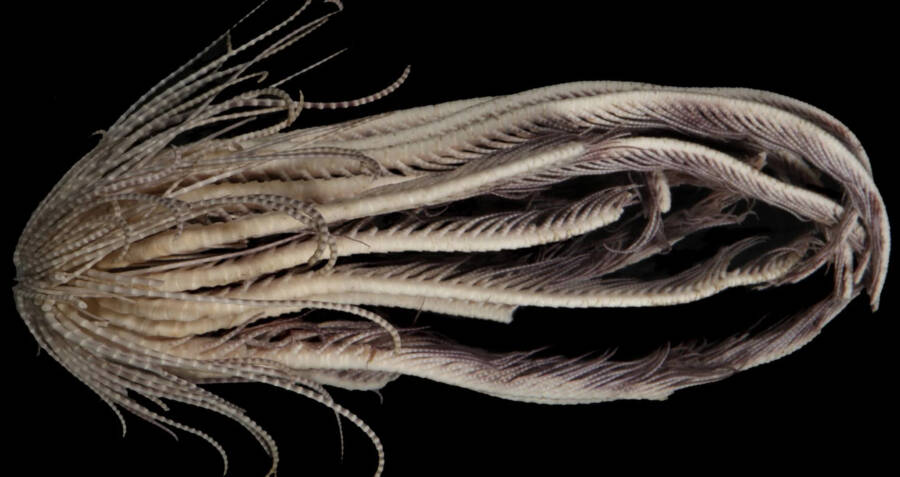Bizarre, alien-like creature discovered deep in Atlantic Ocean has 20 gangly arms
By Ben Turner
livescience.com
8/18/2023
Researchers have discovered an otherworldly, 20-tentacled creature lurking in the freezing depths of the Antarctic Ocean.
Resembling an alien or a Lovecraftian horror, the Antarctic strawberry feather star (Promachocrinus fragarius) is one of 4 new species of crinoids that scientists found at the bottom of the ocean. Crinoids are a group of eerie, perfectly symmetrical creatures that include sea lilies & sea feathers. Sea lilies attach themselves to the ocean floor with a stalk, while sea feathers abandon their stalk upon reaching maturity to waft themselves through the sea with mesmerizing, synchronized swishes of their arms.
Prior to the discovery, there was thought to be only one species of Antarctic feather star, Promachocrinus kerguelensis. But the new research has revealed that at least 8 species of the strange creatures live in the waters surrounding the southernmost continent, at depths ranging from about 330 to 3,300 feet (100 to 1,000 meters).
To discover the new animals, whose colors range from purple to dark red, researchers trawled a net across patches of the Southern Ocean to collect samples of the creatures. After performing a DNA analysis, the researchers classified the creatures into 4 new species.







No comments:
Post a Comment